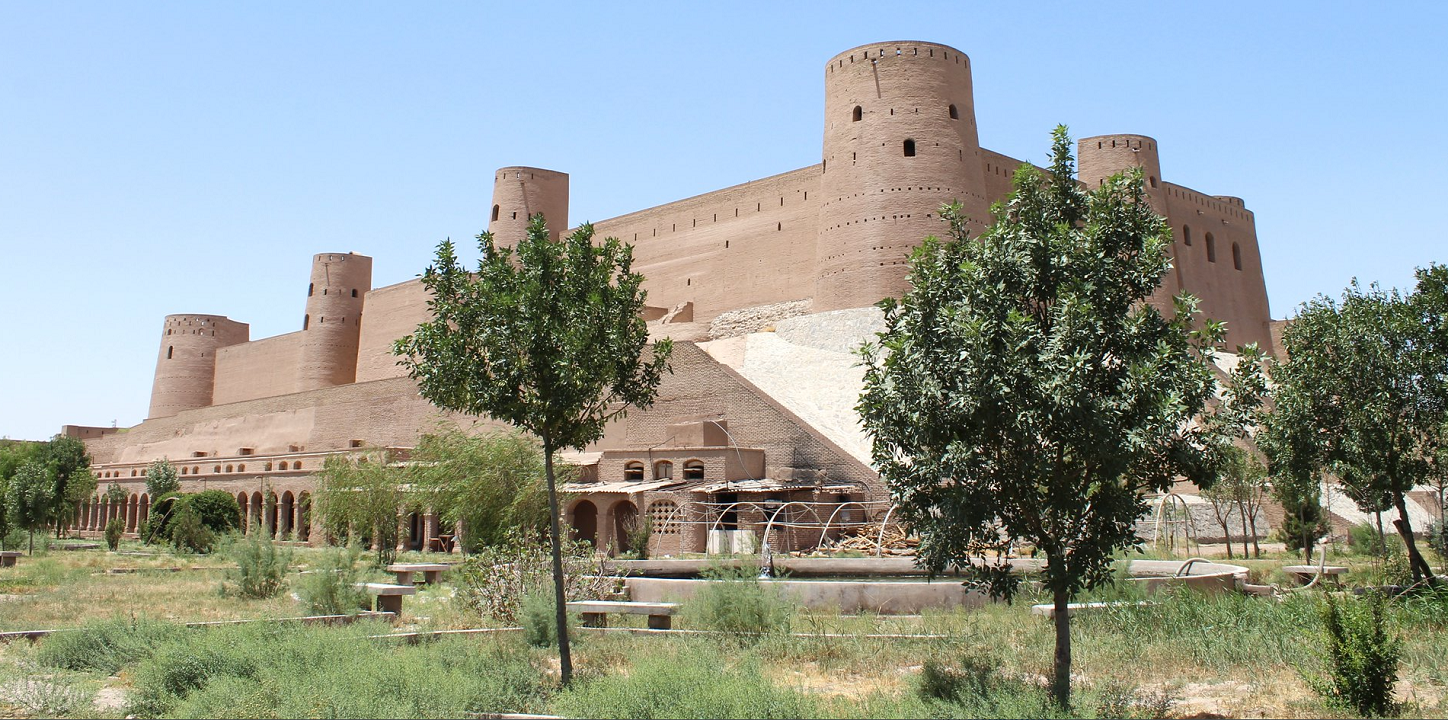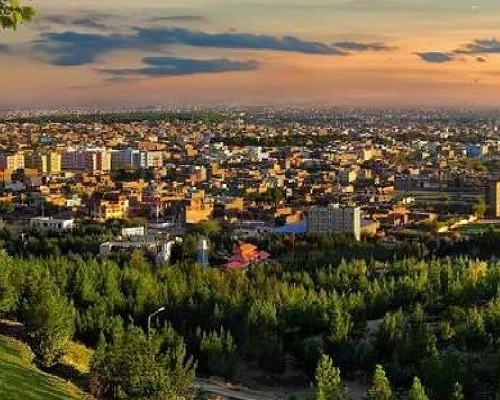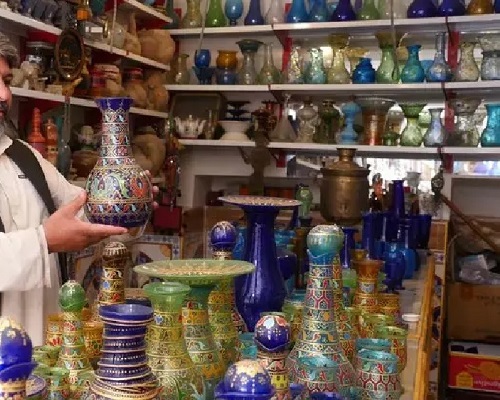
EXPLORE HERAT
Discover the breathtaking landscapes of Herat, Afghanistan on a culturally-rich adventure

Herat, a city of great historical and cultural significance, is a jewel in western Afghanistan. Known as the "Pearl of Khorasan," Herat boasts numerous architectural marvels, including the Herat Citadel, the Friday Mosque, and the tomb of the poet Jami.
The city's vibrant bazaars and traditional crafts make it a hub for cultural tourism.
Herat's surrounding countryside offers picturesque landscapes and opportunities for exploring ancient caravanserais and forts. A visit to Herat is a journey through time, filled with rich history and cultural experiences.
Attractions
The Herat Citadel, also known as Qala Iktyaruddin, towers over the cityscape, offering a tangible connection to the multifaceted history of Herat.
This historic fortress, dating back over two millennia, has seen the rise and fall of numerous empires and dynasties, each leaving its mark on the structure.
Today, the citadel serves not only as a monument to Herat’s past but also as a cultural venue, hosting exhibitions and events that celebrate the region’s heritage.
The panoramic views from its ramparts offer a breathtaking perspective of Herat, making the citadel a must-visit for those seeking to immerse themselves in the city’s historical narrative.

The Friday Mosque, or Masjid Jami, in Herat is renowned for its stunning Islamic architecture and intricate tilework, reflecting centuries of artistic evolution.
This magnificent mosque, continually embellished by successive rulers, is a living museum of Islamic art, with each tile and archway telling a story of devotion and beauty.
The mosque’s grandeur and serene atmosphere draw both worshippers and admirers, making it a focal point of spiritual and cultural life in Herat.
Its courtyards and prayer halls, adorned with azure tiles and calligraphic friezes, offer a tranquil escape and a profound insight into the Islamic artistic heritage that flourishes in this historic city.

The iconic Minarets of Herat, remnants of a once-thriving Musalla Complex, stand as majestic sentinels of the city’s glorious past.
These towering structures, with their intricate brickwork and blue tile inlays, echo the days when Herat was a nexus of the Silk Road, renowned for its scholarly and artistic achievements.
Despite the ravages of time, the minarets continue to captivate onlookers, embodying the resilience and enduring cultural legacy of Herat.
They serve as a poignant reminder of the city’s historical significance and its role in the rich tapestry of Islamic civilization.

The Mausoleum of Gowhar Shad in Herat stands as a tribute to one of the most influential figures in Timurid history.
As a patroness of the arts and architecture, Gowhar Shad’s contributions to the cultural landscape of Herat are immortalized in this exquisite mausoleum.
Renowned for its architectural elegance and the intricate tile work that adorns its dome and façade, the mausoleum is a masterpiece of Islamic architecture.
It not only serves as a final resting place for Gowhar Shad but also as a testament to the rich artistic heritage of Herat, drawing admirers of history and art to this poignant symbol of creativity and devotion.

The Old City of Herat is a living museum, where narrow alleys and bustling bazaars tell the stories of centuries past.
This historic heart of Herat is a hub of activity, where traditional craftsmen ply their trades alongside vendors selling an array of goods, from spices to silk.
The architecture of the Old City, with its ancient caravanserais and historic homes, offers a window into the daily lives of Herat’s inhabitants through the ages.
Visitors to the Old City are immersed in a sensory experience that captures the essence of Herat’s rich heritage, making it an essential destination for those seeking to experience the vibrant culture and enduring traditions of this storied city.

The shrine dedicated to Khawaja Abd Allah Ansari, the revered Sufi saint and poet of Herat, is a place of pilgrimage and reflection.
Situated in the outskirts of Herat, the complex includes a mosque, minaret, and the saint’s tomb, set within a serene garden.
Ansari’s profound spiritual writings and poetry have left a lasting impact on Islamic mysticism, and his shrine attracts devotees and reflects centuries of history with panoramic views.

The Musalla Complex in Herat, once a magnificent assembly of mosques, minarets, and mausoleums, stands as a poignant reminder of the city’s historical grandeur.
Commissioned by Gowhar Shad in the 15th century, this architectural ensemble showcased the pinnacle of Timurid art and architecture.
Today, the surviving elements of the complex, including the majestic minarets and the Mausoleum of Gowhar Shad, offer a glimpse into the splendor of a bygone era.
The site, with its historical and artistic significance, invites exploration and contemplation, allowing visitors to imagine the complex in its full glory and appreciate the rich cultural legacy of Herat.

Takht-e Safar Park, located just outside Herat, is a lush oasis that provides a respite from the city’s hustle. This popular park, with its rolling hills, meandering pathways, and shaded picnic spots, is a favorite among locals and tourists for leisurely walks, family outings, and enjoying nature’s beauty.
The panoramic views of Herat and its surrounding landscapes from the park’s higher points add to the allure of Takht-e Safar, making it an ideal destination for those seeking a peaceful retreat and a chance to appreciate the natural beauty that complements the historic city’s architectural wonders.

Nestled in the heart of Herat, the Herat Glass Factory stands as a vibrant testament to the enduring legacy of Afghan craftsmanship.
This historic workshop, renowned for its unique and colorful glassware, continues the centuries-old tradition of glassblowing, a craft that once flourished along the Silk Road. Artisans at the factory employ age-old techniques, melting and molding glass into exquisite pieces that reflect the rich cultural heritage of Herat.
Visitors to the factory can witness the mesmerizing process of glassmaking, from fiery furnaces to the delicate shaping of each piece, and take home a piece of Afghan history.
The Herat Glass Factory not only preserves a precious art form but also offers a glimpse into the creative spirit that defines Herat's identity.

In the historic city of Herat, the Islamic madrassas serve as vital institutions for religious and academic education.
These madrassas, often attached to grand mosques or independent, are deeply rooted in the city's scholarly traditions, dating back to when Herat was a renowned center of Islamic learning. Students here immerse themselves in the study of the Quran, Hadith, jurisprudence, and Islamic philosophy, continuing a legacy of intellectual pursuit and spiritual development.
The madrassas of Herat, with their courtyards, lecture halls, and libraries, are not just educational institutions but also communal spaces where the values of knowledge, faith, and community service are cultivated.
For visitors, these madrassas offer a unique insight into the role of religious education in shaping the cultural and spiritual life of Herat.
Sign off here. We will reply in 24 hours with futher details.